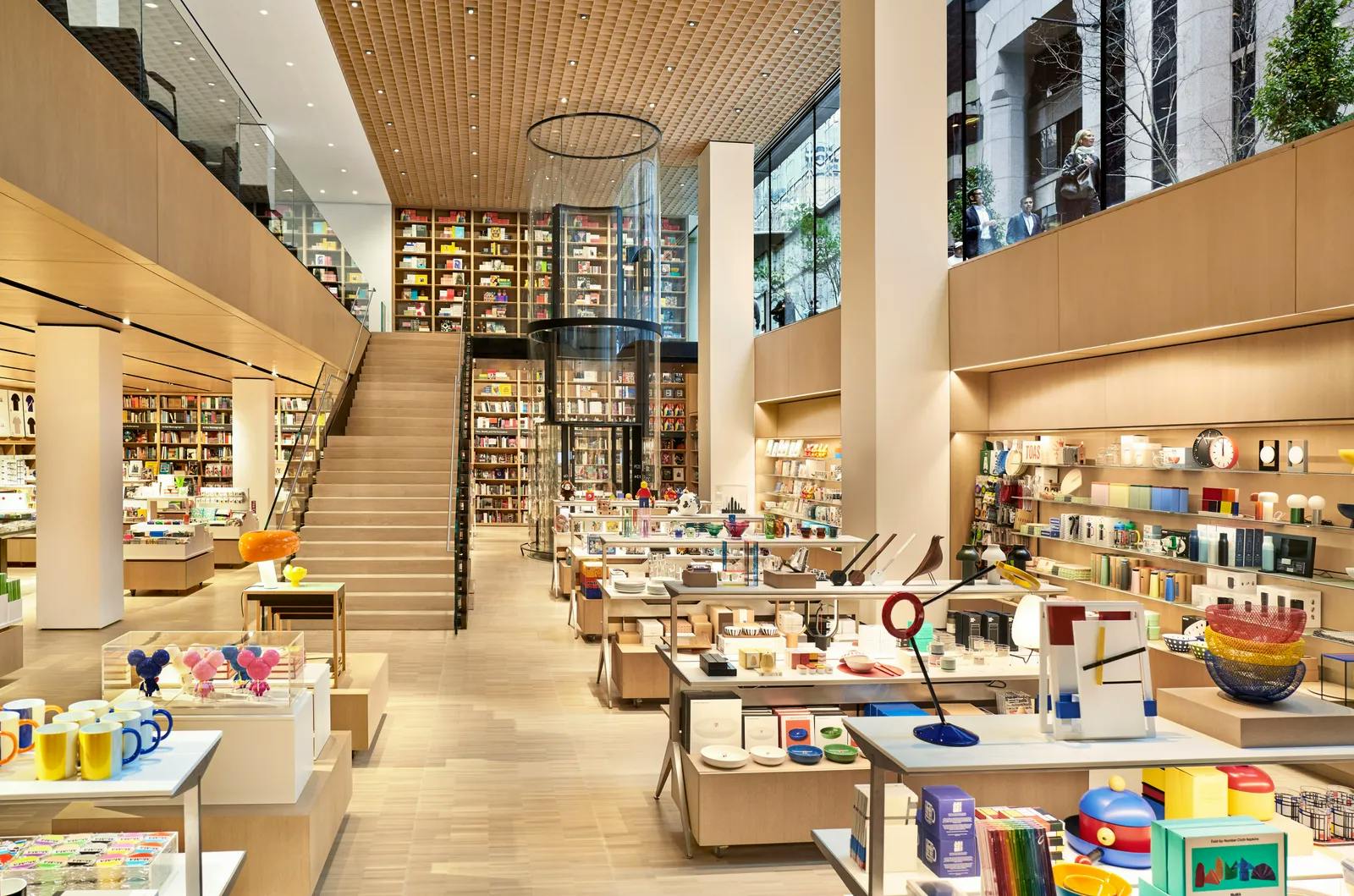The story behind the rise of museum gift stores: How museum stores turned into an influential retail sector.

Once upon a time, museum gift stores were souvenir destinations, but nowadays, they are millionaire businesses involving intricate marketing strategies and an eclectic offering of merchandise that blurs the lines between art, fashion, and avant-garde design. In this post, we explore the story behind the rise of museum gift shops as trend-setting spots, focusing on the process that turned them into a specialized retail sector instrumental to the museum experience and the sustainability of non-profit cultural organizations across the globe.
What are the origins of museum gift stores?
Souvenirs have been around for centuries. For example, ancient Egyptians, Greeks, and Romans gathered rare artifacts and products from their expeditions in foreign lands. This continued during Medieval times when pilgrims took with them holy relics from their religious-oriented trips, and afterward, Europe’s elite collected all sorts of items from the New World and China. However, as this Bloomberg article explains, starting in the mid-19th century, the birth of tourism as a leisure practice exploited souvenir shopping in varied destinations, including in the US Mount Vernon and the Capitol, and in Europe, the most important historic sites. In terms of the museum world, the emergence of museum shopping was an improvised and unstructured affair that accompanied the development of cultural institutions across the globe during the late 18th century and early 19th century.
For this reason, the first products offered by museums to their visitors frequently covered reproductions from their collection or catalogs and later on much cheaper alternatives thanks to the mass-reproduction techniques that became available during the 19th century. As an example of this, at the Louvre Museum since 1797 and to this day, La Chalcographie du Louvre has conserved and printed from a collection of thousands of engraved copper plates, with the prints destined for sale. On the other hand, as early as 1838, the National Gallery in Britain offered plaster-cast copies of the recently acquired (and highly controversial) Parthenon reliefs and later on sold cheaper photographs and prints, states this paper by J. Larkin.
Within the US, a similar process unfolded. Among the first documented museum-selling practices in the US is the one conceived by portrait artist Charles Willson Peale, credited for opening the nation’s first successful museum dedicated to educating and entertaining the public. According to this essay, as early as 1802, the museum started offering to its visitors souvenir silhouette portraits produced onsite by Moses Williams, an African-American artist who had once been a slave of Peale’s, with the help of the physiognotrace (a newly created instrument with which an operator traced a person’s profile and used it to cut paper silhouette portraits). Another early example of these practices is the souvenir business venture of the Metropolitan Museum of Art, which shortly after its opening (1872) started selling high-quality reproductions from its collection that were followed by cheaper reproductions.
While a detailed account of the early history of museum stores is yet to be written, it suffices to say the first wave of “official” museum shops dates back to the late 1800s when visitors could find a box kept under the information desk with cheap reproductions, postcards, catalogs, and guides. In rarer cases, there might even be a small sales counter with some custom items. Over time, emblematic museum stores, such as MOMA’s, opened in 1939 as simple sales counters on the Museum’s premises on 53rd Street. Little by little, and particularly after WWII when at least in the US museum attendance grew and consumer culture emerged, museum gift shops grew in number and size, gaining more importance for the museum structure and finances. Next to this, non-profit associations, like The Museum Store Association (MSA), created in 1955, were opened as a means to promote and support the practices of museum stores and the professionals involved in non-profit retail for cultural institutions that often enjoy tax exemptions on the selling of products related to the museum’s mission.
The rise of the modern museum shop
While museum souvenirs and gifts were a common staple of most cultural institutions, the modern concept of the museum shop can be traced back to the late 1980s when, as this Artsy article explains, the mega-business of sophisticated museum shops first emerged. This process, which was also accompanied by the opening of varied amenities including chef-owned restaurants and specialty coffee shops, relates to both the surge of shopping as a leisure activity, the rise of the first traveling blockbuster museum exhibitions, and the gradual focus placed on the consumer experience. Over time, the most relevant museums across the globe opened different types of stores inside their facilities, more often than not at the exit. Consequently, large-scale museum stores eventually turned into mega businesses. Of course, not all museums can afford to operate mega stores, so a great number of them have remained as rather small boutiques that offer one-of-a-kind objects produced by locals and also coming from overseas vendors.
Overall, the growing demand and interest museums put in their shops, especially in those that represent revenue and propel the museum’s brand, have contributed to building a specialized sector of retail with its own set of professionals, rules, and practices. As proof of this nowadays, there are handbooks for museum retail practices, and large-scale events act as networking hubs for potential vendors and/or partners. Here, it is worth mentioning that while the commodification of the museum through its shops and other sorts of amenities has been criticized by some, it has proven to be beneficial for the financial health of these organizations.
Furthermore, museum stores have also turned into experiences by themselves, and in most cases, great care is put into the concept behind the display of the products that are offered. Some of the most emblematic examples of this are the concept for the annex shop of the Musée National Picasso, in Paris, which was designed as a four-room apartment across the street from the museum and was decorated inspired by Picasso’s own flat. More recently, stemming from the vision of the legendary designer who blurred the lines between art, commerce, and fashion, the exhibition shop was integrated into the first Virgil Abloh retrospective (Museum of Contemporary Art Chicago and Brooklyn Art Museum) with great success and hype. Furthermore, over the years, museum gift shops have surpassed the museum walls and have turned into independent trend-setting stores, such as the aforementioned MOMA Design Store, or pop events as the one staged by Britain’s National Gallery in Shanghai's metro stations, explains this Art Industry article.
Without a doubt, these days the offering is so diverse that it would be impossible to define what can be found at a museum store as it varies enormously depending on the scale, focus, creativity, and possibilities of each museum. Everything from a pencil and paper clip to a high-end piece of furniture or art reproduction can be found within its walls. Next to this, in recent years museum stores have partnered with brands to create all sorts of licensed products ranging from the luxury sector to tableware, furniture, clothing, and toys. For instance, brands like Lego and Playmobil have partnered with museums to create licensed collections of sets inspired by world-famous artists like Van Gogh. There is now a Lego set inspired by Van Gogh’s Starry Night launched by MOMA, and a Playmobil collection inspired by the same artist which was created in collaboration with the Rijksmuseum, in Amsterdam.

As further proof of the reach of museum shops within the US and elsewhere, since 2017, the MSA has organized Museum Store Sunday as a means to offer a unique shopping experience. The next edition will take place on November 26, 2023, and, as the event’s website states, "will involve more than 2,100 Museum Stores representing all fifty states, 25 countries, and five continents that will offer original shopping experiences.”
The digital museum shop: making the museum brand available to all
Remarkably, during the last few years, museum stores have also expanded their reach by creating online stores that are available to all. Some of them are huge in scale, like the one at the Met or MOMA, while others are more modest, yet they still offer the “museum taste” to a diverse array of customers interested in finding thematic or unique objects. While online stores flourished with the emergence of the pandemic, many major museums have already been developing online retail arms for quite some time. For example, in Britain, the National Gallery launched its online shop in 2000, and Tate in 2010. At the same time, some years ago, the RMN-GP, a French organization that oversees more than thirty museums, opened Boutiques de Musées, an online store where all their affiliates offer their products.
Here, it is important to note that an efficient online store represents a considerable investment for cultural institutions in terms of photography, marketing, and delivery services and does not always result in revenue, as museum store purchases are often related to an experience, particularly in the case of small-scale museums that are not a brand. Regardless of this, some sort of online presence, whether it is on Instagram or a neatly designed webpage, is mandatory these days. Without a doubt, museum stores will only continue expanding, and hopefully, the many facets of this sector will be analyzed in more detail, as its meteoric rise reflects what visitors are expecting from the museum experience these days and, more so, it has proven an effective means to keep these institutions afloat amidst budget cuts and economic turmoil.